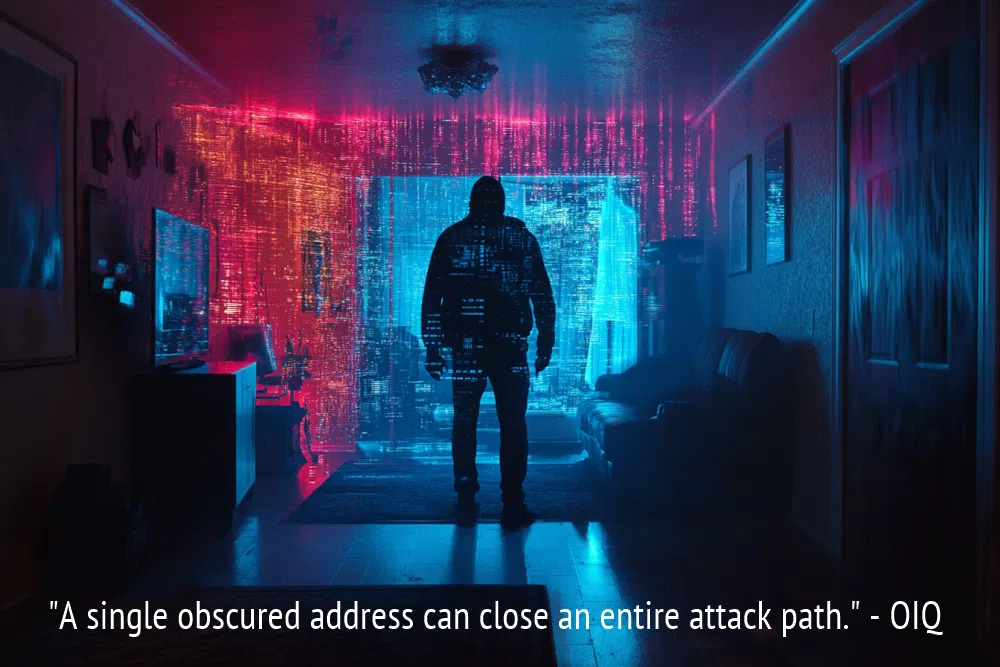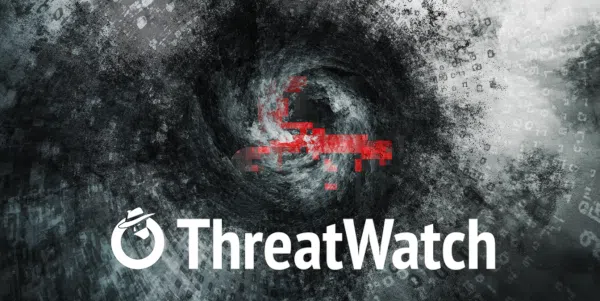Home Invasion
Overview
Residences are the soft perimeter. Corporate offices are hardened. Homes are not. Executives frequently own multiple properties. Each address is a new attack vector.
What lives online often becomes literal. Public records, broker listings, and social posts map entry points and routines.

The Digital Trigger Chain
One public property record plus a tagged travel post can produce a precise target in hours. Brokers, social posts, and public filings form a fast fuse. Data stitched together reveals addresses, arrival times, and weak entry points. In one 2024 case, a keynote announcement plus a deed record pointed attackers to the correct hotel within 24 hours. Treat every public data point as part of the fuse.
- Property deeds and tax records indexed on people-search and broker sites.
- Real estate listings and archived MLS data with photos and floorplans.
- Geotagged family posts and vacation check-ins.
- Service vendor leaks: contractors, landscapers, housekeepers.
- Home-services app accounts visible in breach dumps.
- Location broker feeds and ALPR traces tied to vehicles.
"What used to take weeks of surveillance now takes minutes of searching." - OIQ
Risk Assessment
Even with moderate statistical ⚡ frequency, the operational impact of a home invasion is 💣 severe. The risk is not just in loss but in proximity. An adversary crossing the threshold.
Digital footprint suppression has disproportionate leverage here. Removing property records, family identifiers, and travel cues cuts off the planning routes that turn exposure into intrusion.
"A single removed address can close an entire attack path." - OIQ
Adversary Profile: Methods and Motives
Who they are
Common Tactics, Techniques, and Procedures (TTPs)
Capabilities
Indicators that you are being targeted
Risk amplifiers
One-line mitigation pointers
Typical attack timeline
Recent Case Patterns
Each case shows how a single exposure path—one post, one vendor, one detail—can cascade into a physical breach.
#CelebrityMove: The Tracked Relocation
Vendor social posts turned a move into a reconnaissance feed.
Scenario:
A Fortune 500 executive relocates cross-country. The moving firm's social media manager posts a "#celebritymove" story showing a gated driveway and skyline view. The clip circulates through private Telegram channels used by crews that specialize in at-home robberies of high-net-worth families. Three weeks later, while the family is dining in, two masked men breach the side door. They know exactly which entrance is unalarmed, visible in the video. They isolate the family in the kitchen, demand watches, and escape in under six minutes.
Indicator: Vendor or staff social posts exposing the home's architecture or layout.
Mitigation: Enforce a strict no-post, no-tag policy for all vendors. Require NDAs covering imagery, GPS data, and brand mentions.
The Remodel Leak
Pride posts from a contractor became a burglary blueprint.
Scenario:
A remodel contractor uploads before-and-after shots to Instagram, proud of their work on a "celebrity's home in Brentwood." The photos show a new glass entry wall and the location of the security keypad. A small crew that follows such posts uses public building permits to pinpoint the address. One evening, they strike while the family is inside, timing entry between routine patrol passes. They use the same back door shown in the photo set.
Indicator: Architectural or design posts that reveal floor plans or tech placement.
Mitigation: Pre-approve every photo vendors publish. Blur or crop any image showing structure or layout. File permits through anonymized entities.
The False Delivery
A fake drop-off exploited weak vendor verification.
Scenario:
A luxury furniture company outsources its final-mile deliveries. A subcontractor recognizes the client's name and tips off a relative with a record for armed robbery. The next day, the relative arrives in a fake uniform with a clipboard. When the housekeeper opens the side gate expecting a routine drop-off, the crew forces entry. The family is home. The confrontation turns violent before police arrive.
Indicator: Unverified or unvetted subcontractors on vendor access lists.
Mitigation: Keep an approved roster of delivery personnel. Require photo ID verification for all contractors. Never permit unannounced entries.
The Short-Term Stay Compromise
Temporary housing relaxed permanent security standards.
Scenario:
A senior executive rents a short-term home during renovations. The security team relaxes standards, assuming the temporary property is off the radar. A service worker recognizes the tenant and tells acquaintances. A small crew surveils the home for several days, noting light patterns and departures. They enter just after the guard leaves for the night, believing only staff remain. The principal's spouse walks into the encounter.
Indicator: Predictable routines and reduced security at temporary residences.
Mitigation: Treat every temporary address as a permanent risk site. Maintain full alarm coverage, active monitoring, and randomized vehicle routines.
The Family Post
A teen's background shot revealed more than they realized.
Scenario:
A teenager posts a TikTok from the kitchen, showing a distinctive art piece and city skyline. Within hours, someone cross-references the artwork with a design magazine naming the street. That night, a car idles near the house. The family dog's bark triggers an alert just as two masked figures approach the side entrance.
Indicator: Interior details or skyline views visible in public social posts.
Mitigation: Educate family on background risk. Use designated safe-share areas that reveal no artwork, views, or valuables.
Insider: Trusted Staff Turned Vector
Loyalty failed before the locks did.
Scenario:
A long-time house manager falls into debt and begins sharing household routines with a friend. The friend passes the details to a crew that specializes in while-home entries. One evening they strike, timing the breach between the nanny's break and the patrol shift. They move straight to the master suite. The manager stays employed, acting surprised.
Indicator: Staff showing lifestyle changes, unexplained side income, or excessive curiosity about family movements.
Mitigation: Rotate keys and codes quarterly. Run financial and background rechecks. Limit who knows travel plans. Build loyalty through structure, not assumption.
Post-Event Targeting: From Stage to Doorstep
Public appearances linked adversaries to private routes.
Scenario:
A CEO delivers a keynote at a high-profile summit. Photos on social media show her black SUV, driver, and exit route. A follower studies the images, tracks the route, and tails the convoy home later that week. They time their approach with a scheduled delivery, confronting the spouse at the door before security reacts.
Indicator: Public event photos showing vehicles, drivers, or consistent routes.
Mitigation: Stagger departures. Rotate cars and routes. Keep driver identities confidential. Train PR staff to scrub identifying details from media posts.
Concierge App Leak: Permission Creep Becomes Threat
A luxury service app leaked its clients' home access data.
Scenario:
A luxury concierge app stores client schedules, gate codes, and vehicle details in a weakly protected portal. Attackers exploit credentials and pull access logs. They impersonate a valeted driver during a storm, naming the correct vehicle and client family. The guard opens the gate. Two masked intruders step out seconds later.
Indicator: Third-party vendors storing sensitive personal schedules or property data.
Mitigation: Require vendors to use multifactor authentication and encrypted portals. Remove personal metadata from stored records. Centralize delivery verification under one monitored channel.
"Each of these incidents began with a digital trail. Open data, online chatter, or leaked personal information. That made targeting possible." - OIQ
Sidebar: Every adversary starts with data. Remove the data and you remove the path.
ObscureIQ can remove your data with footprint suppression services.
ObscureIQ can also alert you to bad actors talking about before they strike.

Each of these cases began online. The Risk Dynamics section shows how and why digital exposure fuels modern intrusion.
Risk Dynamics
Home invasion risk is no longer random. It grows from digital exposure and automation. Attackers don’t need to scout a property. They can assemble it from data already online.
Summary: The architecture of the threat hasn’t changed. What’s changed is how easily attackers can find and reach a target.
Algorithmic Amplification
Online outrage engines don't just spread opinions. They teach attackers how to find people. Recommendation systems and AI-driven feeds connect attackers with tools, maps, and communities that normalize intrusion and aggression. What used to take surveillance now takes a search bar.
Data Exposure at Scale
Property deeds, broker databases, breach dumps, and social archives have erased location privacy. A motivated adversary can map an executive's residences, vehicles, and travel patterns in minutes using open data. No hacking needed. Just assembly.
Cross-Platform Convergence
Attackers aggregate. Open-source intelligence tools scrape multiple platforms at once, fusing identity, timing, and location into live attack maps. Artificial-intelligence assistants now let people with no OSINT background run these operations from a phone.
"The modern intruder doesn't need to follow you home. They can build your home in software first. Then walk in knowing exactly where to go." - OIQ
Recommended Counter-Moves
"You can't buy more time once an adversary has your address." - OIQ
Quick Checklist (first 30 days)
ObscureIQ Insight
Across executive audits, exposed property data appears in the causal chain in about 80 percent of residential intrusion cases.
One removed address often severs a whole attack path. Modern adversaries rely on aggregated traces. Fixing one key leak (a deed, a listing, or a contractor file) can collapse an entire attack map.
